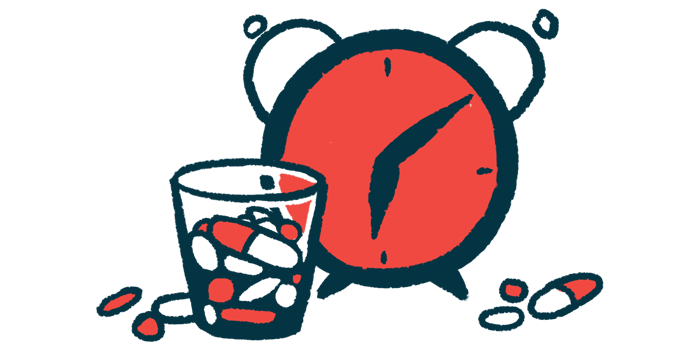Access to Trikafta almost exclusive to high-income countries: Study
Global disparities, high price affect CF outcomes in lower-income countries
Written by |

Four years after the approval of Trikafta (elexacaftor/tezacaftor/ivacaftor) for cystic fibrosis (CF), global disparities in access to the treatment remain and mainly affect low- and middle-income countries, according to a recent study.
“The extent of international disparities, in combination with the high price, suggested that without urgent action, [Trikafta] would remain inaccessible outside of the Global North and therefore contribute to a widening of health disparities,” researchers wrote, adding that “equitable access to CFTR modulators must become a top priority for the international CF community.”
Strategies to increase access to treatment may include limiting the price to manufacturing costs in low-income countries through voluntary licenses, in which the patent-holding company allows the development of a generic version of the treatment by other companies under certain conditions.
However, “other mechanisms to improve access that circumvent the manufacturer should also be considered,” researchers wrote in the study, “International disparities in diagnosis and treatment access for cystic fibrosis,” which was published in Pediatric Pulmonology.
CF is caused by mutations in the CFTR gene that result in a nonworking or missing protein of the same name. This ultimately leads to the production of thick and sticky mucus that accumulates in several organs, interfering with their function and leading to inflammation and tissue damage.
Trikafta has ‘revolutionized’ CF treatment
The use of CFTR modulators, particularly Trikafta, Vertex Pharmaceuticals’ next-generation triple combination therapy, to increase the functionality of the CFTR protein has “revolutionized” CF treatment and has become the standard of care.
While CF is increasingly viewed as a disease affecting people of all ethnicities, evidence is growing about the unequal access to Trikafta around the world, particularly in low- and middle-income countries. This is mainly due to the treatment’s high costs, which in the U.S. can reach $322,000 per year.
To provide new estimates of the global CF population and characterize the extent of international gaps in CF diagnosis and treatment equity, researchers in the U.K. analyzed data from 158 countries, including high-income and low- to medium-income countries.
Data came from patient registries, systematic literature searches, and an international survey conducted by 14 leading CF clinicians and patient organizations. The proportion of CF patients receiving Trikafta was estimated using Vertex’s publicly available revenue data, and a survey of 23 national drug pricing databases.
Overall, 188,336 people (ranging from 163,421 to 209,204) are estimated to have CF in 96 countries, and 112,955 of them (60%) have been diagnosed. No such data are available from 63 countries (21% of the total population of the 158 countries).
About 40% of people in 54 countries remain undiagnosed
Data suggested 75,381 (40%) people remain undiagnosed in 54 countries, 82% of whom live in a low- or middle-income country. No data are available to estimate the undiagnosed population for 102 countries (representing 55% of the total population).
The highest number of patients (51,160) was estimated to be diagnosed in 40 European countries, followed by 38,419 people in eight North American countries, mainly the U.S. and Canada. A total of 950 patients were identified in Mexico and 296 in Cuba.
A total of 11,421 people were estimated to be diagnosed with CF in eight countries in South America, followed by 6,085 people in 28 Asian countries, and 4,174 people in Australia and New Zealand. The lowest number of diagnosed CF patients was estimated to be in Africa: 1,696 people in nine countries.
In 2020, Trikafta was reimbursed only in six countries, a number that was expanded to 36 countries in 2023, of which 35 are considered high-income countries. About 27% (51,322) of the estimated CF patients were treated with Trikafta, of whom nearly half (49%) lived in the U.S., 42% in Europe, and 9% in Canada, Israel, Australia, and New Zealand combined.
A large proportion of diagnosed patients in South America, Asia, and Africa had no access to Trikafta, and the therapy was inaccessible in Mexico and Cuba.
13.2% of all diagnosed patients in countries where they cannot access Trikafta
Overall, estimates indicated 14,911 people diagnosed with CF (13.2% of all diagnosed) live in a country where they have no access to Trikafta. This number is estimated to be more than five times higher if accounting for undiagnosed people in low- and medium-income countries.
“Four years after [Trikafta] was launched, there remains almost no access to treatment in [low- to medium-income countries] due to prohibitively high prices,” the researchers wrote, adding “this is likely to result in a profound international divergence in outcomes.”
The team noted possible solutions to provide equitable access to the treatment include a reduction in the price under voluntary licensing agreements, challenging the patent conditions, or compulsory license applications, often provided by governments to allow another company to produce the medication without the consent of the patent holder.









